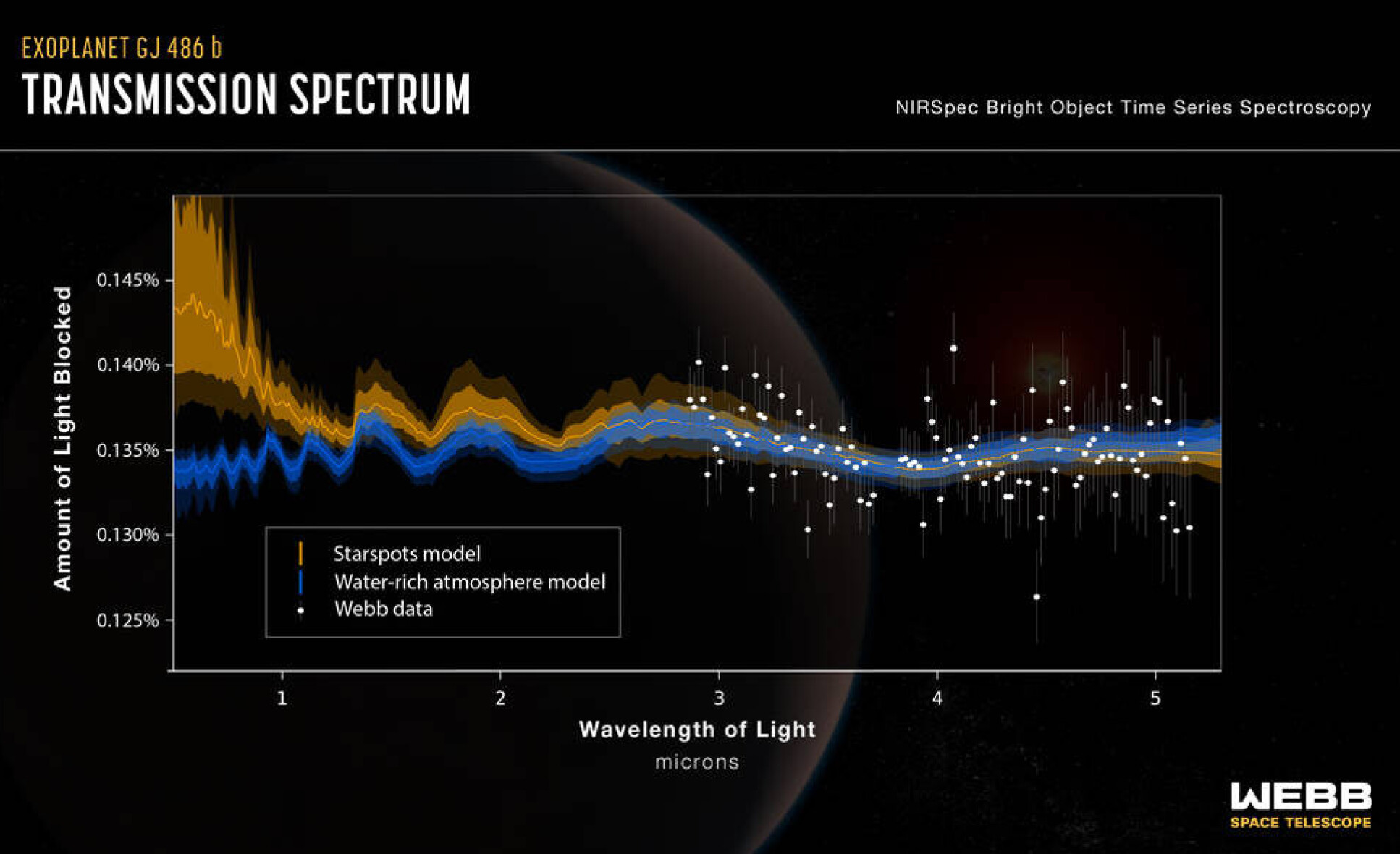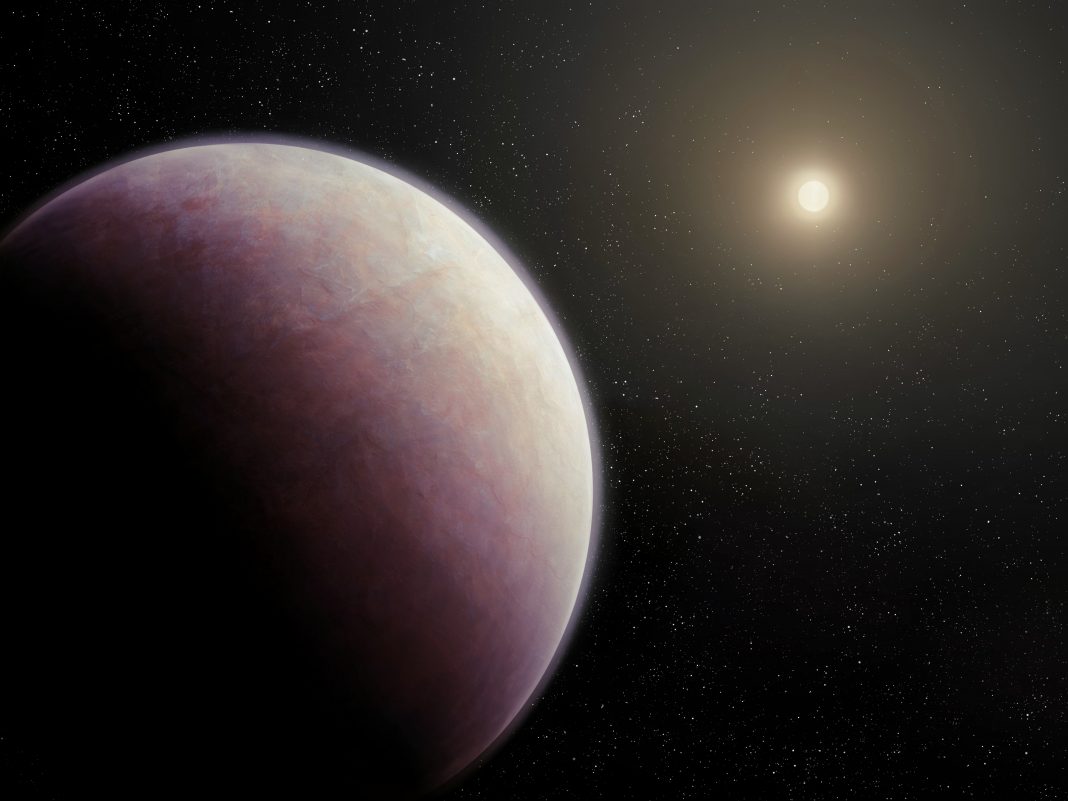Using NASA’s James Webb Space Telescope to look at a rocky exoplanet known as GJ 486 b, researchers find signs of water vapour – hinting at an atmosphere
No atmosphere has been detected around a rocky exoplanet before. Yet, scientists working with the James Webb Space Telescope have potentially located water vapour around exoplanet GJ 486 b, which would be a first if confirmed.
Scientists analysing rocky exoplanets – which are defined by sizes less than or equal to 1.4x Earth’s radius – aim to find whether they could maintain or re-establish an atmosphere in a harsh environment.
Dr James Kirk, from the Department of Physics at Imperial, helped analyse the data. He said: “Previous searches for atmospheres of rocky exoplanets around red dwarfs have been inconclusive. Our study of GJ 486b demonstrates that there is water in the system, either in the planet’s atmosphere or the stellar atmosphere.
“If follow-up observations confirm that the water is in the planet’s atmosphere, this would have important consequences for our understanding of the atmospheres and habitability of rocky exoplanets orbiting red dwarfs.”
Understanding the habitability of rocky exoplanets
GJ 486 b is about 30% larger than the Earth and has stronger gravity than Earth, too.
It orbits a red dwarf star once every two Earth days. Expected to be tidally locked, it has a permanent day side and a permanent night side.
While being three times as massive as Earth, GJ 486 b transits its star, crossing in front of the star from our point of view.
A planet must be in a tight orbit with the red dwarf to stay warm enough to potentially host liquid water
As red dwarf stars as the most common, rocky exoplanets similar to Earth are most likely to be found orbiting such a star. Red dwarf stars are cool, so a planet must be in a tight orbit with them to stay warm enough to potentially host liquid water and be habitable.
Such stars are also active, particularly when they are young, releasing ultraviolet and X-ray radiation that could destroy planetary atmospheres. As a result, one important open question in astronomy is whether a rocky planet could have an atmosphere in such a harsh environment.
What does an atmosphere indicate for exoplanets?
If GJ 486 b has an atmosphere when it transits starlight, it filters through those gasses, imprinting marks in the light that allows astronomers to see its composition through a technique called transmission spectroscopy.
While the exoplanet is too close to its star to be within the habitable zone, the observations show hints of water vapour.
If the water vapour is linked with the planet, this would indicate that it has an atmosphere despite its extremely hot temperature and close proximity to its star.
If there is an atmosphere, it would prospectively have to be constantly replenished by volcanoes ejecting steam from the planet’s interior. If the water is indeed in the planet’s atmosphere, additional observations are needed to narrow down how much water is present.
Could the ‘vapour’ really be a star in close proximity?
However, the team notes that the water vapour could be on the star itself. Their research indicates that cool ‘starspots’ could be making this effect on the JWST, perhaps not from the planet at all.
Since starspots – like sunspots on our Sun – are cooler than the surrounding area, the water vapour would concentrate there. As a result, it could create a signal that mimics a planetary atmosphere.
Researchers note that additional observations are needed, as computer models show that the signal could be from a water-rich planetary atmosphere (indicated by the blue line) or from starspots from the red dwarf host star (indicated by the yellow line).

As shown in the transmission spectrum diagram, the two models separate at shorter infrared wavelengths, demonstrating how the water signature may also be coming from the star itself.
The two transits, lasting about an hour, were analysed with three different data methods, which were consistent. The team ran computer models considering several different molecules and concluded that the most likely source of the signal was water vapour.
While the water vapour could potentially indicate the presence of an atmosphere on GJ 486 b, an equally plausible explanation is water vapour on the star. The planet’s host star is cool enough that water vapour can exist in its photosphere.
“Water vapour in an atmosphere on a hot rocky planet would represent a major breakthrough for exoplanet science”
Co-lead author of the study Dr Sarah Moran, from the University of Arizona in Tucson, added: “We see a signal and it’s almost certainly due to water. But we can’t tell yet if that water is part of the planet’s atmosphere, meaning the planet has an atmosphere, or if we’re just seeing a water signature coming from the star.”
Co-lead author Dr Kevin Stevenson, from the Johns Hopkins University Applied Physics Laboratory, added: “Water vapour in an atmosphere on a hot rocky planet would represent a major breakthrough for exoplanet science. But we must be careful and make sure that the star is not the culprit.”
Co-author Dr Ryan MacDonald, from the University of Michigan in Ann Arbor, said: “We didn’t observe evidence of the planet crossing any starspots during the transits. But that doesn’t mean that there aren’t spots elsewhere on the star.
“And that’s exactly the physical scenario that would imprint this water signal into the data and could wind up looking like a planetary atmosphere.”











